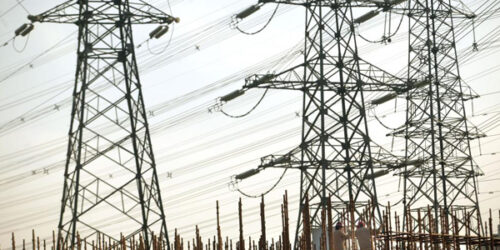As hydel generation from Tarbela dam has dropped alarmingly due to low water inflows, the consumption of furnace oil by power plants has reached to a peak level that will lead to higher electricity rates on account of fuel adjustment for the month of July.
The price of furnace oil had hiked by Rs17,000 per ton following growing demand in the local market in the wake of fluctuation in global oil prices. The cost of furnace oil amounted to Rs75,000 per ton before tax,which has jumped to Rs92,000 per ton in the local market.
The price after tax stood at Rs108,000 per ton against Rs88,000 per ton last month.
Due to the rise in demand for furnace oil following dry-docking, furnace oil stocks dropped to the lowest level of 24,000 tons that had stood at 54,000 tons in the last month.
Officials said that the recent increase in price of furnace oil would also impact the price of electricity. Therefore, consumers would have to pay additional cost of furnace oil due to higher use in electricity.
Low hydel generation from Tarbela dam has hit the country with load-shedding, increasing reliance on furnace oil that will result in higher electricity bills for the consumers.
The consumption of furnace oil had reached 13,500 metric tons per day. Furnace oil utilisation in power plants started since dry-docking after June 30 that had now peaked. Before dry-docking, oil refineries and Pakistan State Oil (PSO) had been conveying concerns to the energy ministry that the power sector was not uplifting furnace oil.
However, its consumption started after June 30 when Engro terminal went on dry-docking. Now, demand of furnace oil had jumped due to hike in electricity generation.
Officials said that the current reservoir level of Tarbela was at 1,438.8 feet and operational power units were generating electricity at 2,000MW. At a level of 1,443.5 feet within the next three days, two more units will be operational. The total electricity generation would reach 2,600MW on July 14, 2021. When the reservoir attains a level of 1,450 feet, then units 15, 16, 17 will be operational and Tarbela’s capacity of generating electricity will touch the 4,000MW mark on July 17, 2021.
Officials said that total electricity generation capacity of Tarbela was 4,800MW, therefore, it would still be generating 800MW less electricity after it achieves electricity generation at 4,000MW on July 17, 2021.
At present, furnace oil consumption stood at 14,500 metric tons in the power sector. The power sector’s firm demand for RLNG is 950 mmcfd whereas it had allocation of 750 mmcfd. Due to less hydel generation, power plants are consuming more oil to meet the rising demand of electricity amid the current heat wave. The power sector is currently facing a shortfall of 200 mmcfd to generate electricity.
Meanwhile, Minister for Power Hammad Azhar has said that due to shortage of water in Tarbela and tripping at different points in the transmission lines, forced load-shedding was being done in different areas of the country.
The minister’s remarks came during a briefing to the National Assembly Standing Committee on Energy. Azhar told the committee that different parts of the country were facing load-shedding due to shortage of water in Tarbela dam, however, as the supply of coal to the power plants has been restored, and water surface in Tarbela has improved, load-shedding all over the country has considerably been reduced. He further added that for the first time, 24,500MW has been transmitted through the current transmission system.
Although the transmission lines are gradually replaced, much work needs to be done to improve the transmission structure in Pakistan. The main focus of the present government is to improve the transmission structure so that more power could be added to the national grid.
MNA Sabir Hussain Kaim Khani questioned for how long are we going to tell people that the transmission system will be improved. The Power Division secretary said, “We are facing resources constraints. Besides, there are governance issues.” He said that in winter the electricity demand goes down to 10,000MW. For six months in a year the government is paying capacity payments to the IPPs, he added.






